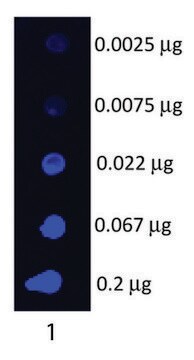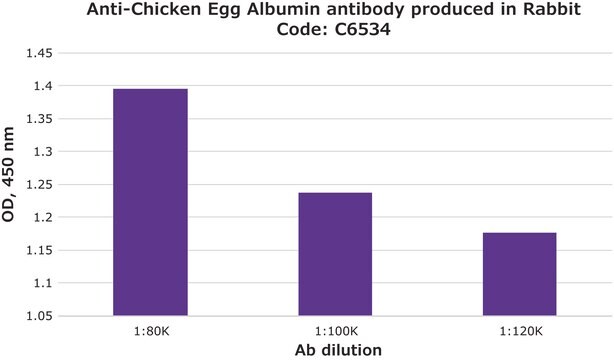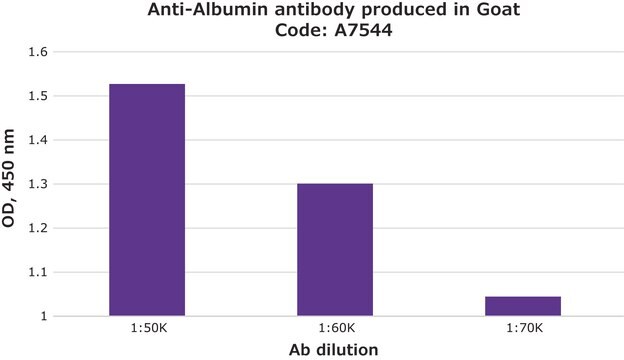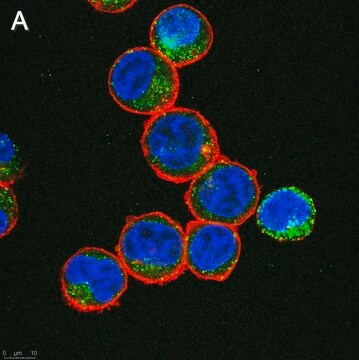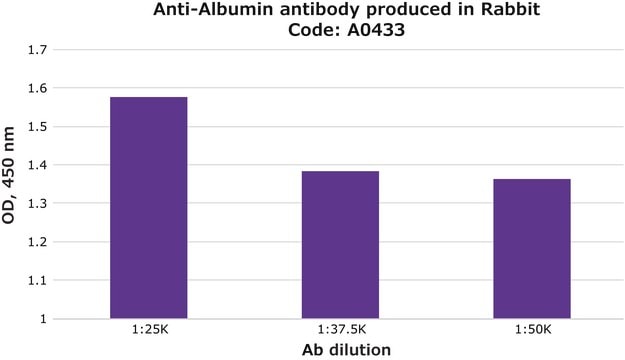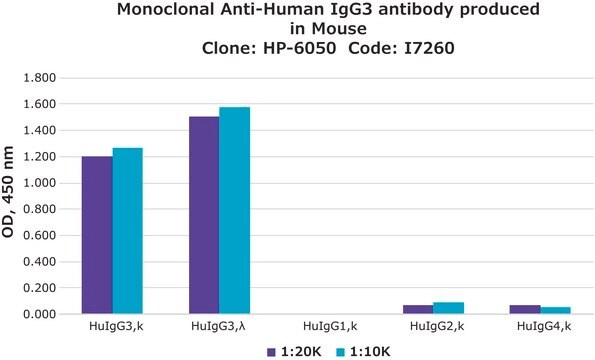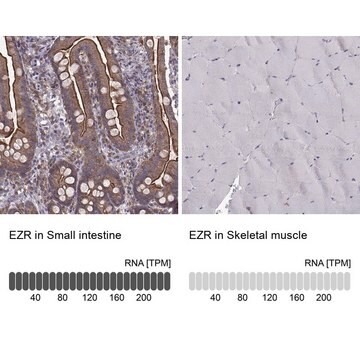SAB4200867
Anti-PMEL antibody produced in rabbit
affinity isolated antibody, buffered aqueous solution
Synonyme(s) :
ME20-M (ME20M) Melanoma-associated ME20 antigen, Melanocyte protein, Melanocyte protein Pmel 17, Melanocytes lineage-specific antigen GP100, Melanoma gp100, P1, P100, Premelanosome protein, Silver locus protein homolog
About This Item
Produits recommandés
Forme d'anticorps
affinity isolated antibody
Niveau de qualité
Forme
liquid
Espèces réactives
human
Concentration
~1 mg/mL
Technique(s)
immunoblotting: 1:1000-1:2000 using human melanoma SK-MEL-28 cell lysate
Numéro d'accès UniProt
Conditions d'expédition
dry ice
Température de stockage
−20°C
Modification post-traductionnelle de la cible
unmodified
Description générale
Spécificité
Application
Detection of the PMEL band by Immunoblotting is specifically inhibited by the immunogen.
Actions biochimiques/physiologiques
PMEL fibrils have an amyloidogenic nature and share features with pathological amyloids.4 Mutations in PMEL are associated with pigmentation disorders and/or impairments in eye development in various species.1,5,6
PMEL is suggested an excellent model system to study mechanisms of intracellular amyloid formation.1
Forme physique
Stockage et stabilité
Clause de non-responsabilité
Code de la classe de stockage
12 - Non Combustible Liquids
Classe de danger pour l'eau (WGK)
WGK 1
Certificats d'analyse (COA)
Recherchez un Certificats d'analyse (COA) en saisissant le numéro de lot du produit. Les numéros de lot figurent sur l'étiquette du produit après les mots "Lot" ou "Batch".
Déjà en possession de ce produit ?
Retrouvez la documentation relative aux produits que vous avez récemment achetés dans la Bibliothèque de documents.
Notre équipe de scientifiques dispose d'une expérience dans tous les secteurs de la recherche, notamment en sciences de la vie, science des matériaux, synthèse chimique, chromatographie, analyse et dans de nombreux autres domaines..
Contacter notre Service technique